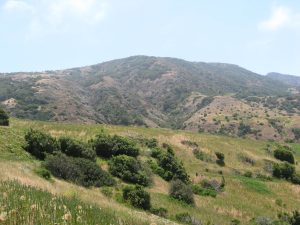When I tell people that I work in a public library, the responses are often the same – how it must be such a peaceful environment, how wonderful it must be to work surrounded by books. These comments are said with good intentions but they do not reflect the reality of working in a library. However, I prefer these comments instead of the dreaded question I am asked when I tell people that I am studying to be a librarian – do people still use the library? I always found this question disheartening because it felt like the work that my colleagues and I were doing was being diminished. However, I am beginning to realize that this is not an effort to demean the work of information professionals but rather reflects an unawareness of what that work looks like.
For many years, people have thought of the library as a palace for books, books are considered the defining feature of the library’s brand (OCLC, 2005). However, libraries have taken considerable efforts to grow their brand to become a place for people not just books. Libraries are becoming a site for building community by being a place for people to learn, encouraging inclusion, supporting civic engagement, connecting people to necessary resources, and promoting the economy (Scott, 2011). The library’s change from a place for books to a place for people can be seen in the programs that the library is offering such as ESL classes, resume help, digital and financial literacy workshops (Young, 2012). Libraries even serve as voting centers and provide information on voter registration (Young, 2012). At my own library, we offer programs such as lawyers in the library, social work in the library, career help, tutoring and more so we can get patrons connected to the help that they need. The mindset of libraries and those who work in them has changed to transform the library into a place where the people we serve are at the center of what we do. The library remains a place for people to access materials but it has expanded its reach to be an environment where people can learn, receive help, and connect with others in an effort to build community.
In libraries, books remain accessible – physically and digitally – to the community. It is also in libraries where people get help with their homework, learn where the nearest warming shelter is located, connect with a lawyer as they work to leave an abusive home, apply for social services, receive help in their search for employment and so much more. These are examples of actual patrons that we have helped at my own public library. When the library becomes a place for people, it draws in everyone, especially those who have been forgotten or ignored by the community. This work can often be frustrating for myself and fellow co-workers especially when our library is facing budgetary constraints, staff shortages, and a lack of support from other agencies. I want to take this concept of the library as a place for people not books to reframe the way I look at my current job and public libraries in general. If the library is centered around people and not books then the library becomes a refuge where people are free to be themselves and connect with others. The library becomes a third place – a place outside of work and home that encourages social interaction and belongs to the community members who visit it (Oldenburg & Brissett, 1982). The work of the information professional then becomes centered on fostering this environment within the library. As a future information professional, I hope to remember that the aim of my job is to help create that safe haven for the community so that anyone and everyone can enter into a library knowing that we are here for them.
References
OCLC (2005). Perceptions of Libraries and Information Studies. Retrieved June 21, 2024, from: http://www.oclc.org/reports/2005perceptiOns.htm
Oldenburg, R., & Brissett, D. (1982). The third place. Qualitative Sociology, 5(4), 265–284. https://doi.org/10.1007/BF00986754
Scott, R. (2011). The Role of Public Libraries in Community Building. Public Library Quarterly (New York, N.Y.), 30(3), 191–227. https://doi.org/10.1080/01616846.2011.599283
Young, R. (2012). More Than Just Books: The Role of Public Libraries in Building Community and Promoting Civic Engagement. National Civic Review, 101(4), 30–32. https://doi.org/10.1002/ncr.21098
